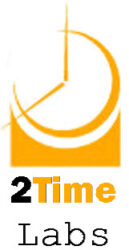 I have been tricked. And I may need your help.
I have been tricked. And I may need your help.
Perhaps the word “trick” is a bit too strong, but I’d love to hear what you think.
An unknown (but noticeable) number of people who take my courses appear to be following the statistic I recently read about trainees reverting to their old behaviors. Apparently, the average is 87%.
I have been thinking about an experience shared by a friend of mine who used to be a personal trainer – not in time management, but in physical fitness. She said that she eventually got bored with the profession because she felt that most of her job after the first two coaching sessions consisted of waking people and getting them to the gym. In a way, she was forced to become a glorified nag.
Nothing wrong with that, and I can see that it could actually be effective in helping people lose weight. At the same time, I can see my friend’s point. A Masters degree is generally not required in order to find a way to motivate a slow-moving client to get to the gym.
From the angle of changing habits, this kind of support is exactly what’s required. In fact, I imagine that those trainers that are effective are able to craft a chain of “escalating interventions.”
Wat exactly do I mean by that term?
Many years ago I had a coach who agreed to work with me. Due to an error, I missed the first appointment and when her contract came to me for signature, it had a proviso. If I missed another session, her rate would go up by US$50 an hour. If I were late once again, it would increase by another US$50 an hour. (I’m not sure about the exact dollar amounts, but they were dramatic.)
In more than ten years of coaching sessions with her, I was never late.
Her “escalating interventions” set a very high bar for me, and it only worked because I was deadly serious about the game I was playing. In my training programs, I want to do something similar, and use whatever means I cam to make a difference.
After a one day program, for example, I might offer 3 kinds of interventions, to help people in their habit changing.
Let’s imagine that the activities involve the following actions to be taken over a ten week period.
a) writing a weekly report and sharing it with the instructor, and someone else from the program
b) updating an on-line daily checklist that involves mastering some new habits, while getting rid of some old ones
c) consuming a single piece of content from my blog 3 times per week and writing a summary of no less than 3 lines
I could imagine offering participants 3 mutually exclusive games to play with respect to this assignment:
——————
No-Game: I don’t want to play a game and want to be left to myself. (I imagine that most participants will choose this option.)
Bronze Game: If I miss a weekly report, or 2 consecutive weekday checklists, or a single summary I pay US$50 to a company or organization that I despise
If I miss 2 weekly reports, or 4 weekday checklists or 3 summaries, I pay US$100 to the instructor’s favorite charity
Gold Game: If I miss a weekly report, or 2 consecutive weekday checklists or a single summary, I pay US$500 to a company or organization that I despise
If I miss 2 weekly reports, or 4 weekday checklists or 3 summaries, I pay US$1,000 to the instructor’s favorite charity
—————–
(The latter two games use principles built into the site Stickkit.com, which uses a service to encourage people to change their habit. I would also borrow the principle of using an impartial referee.)
At the end of the program, I could offer these games to participants, and give them the opportunity to take advantage of the feelings of high motivation that felt at the end. I could also offer them a way to cancel the agreement within 3 days with no penalty, just to make sure they are serious.
What do you think? I am really curious to see what effect this might have, and until I have some experience, I’d love to hear what you think!




